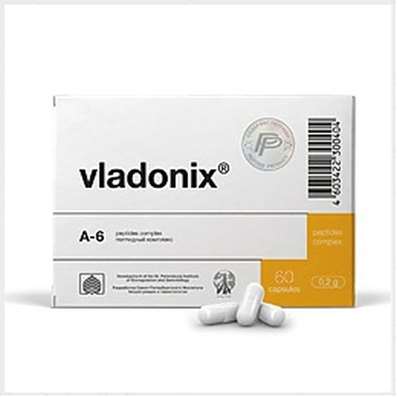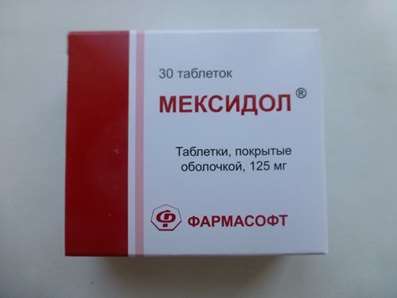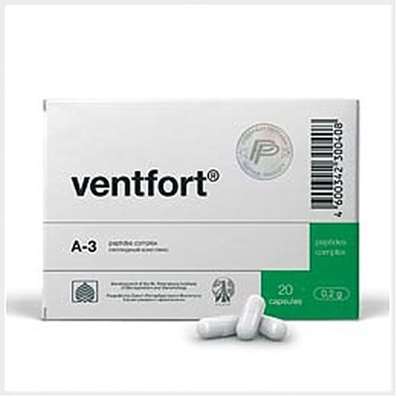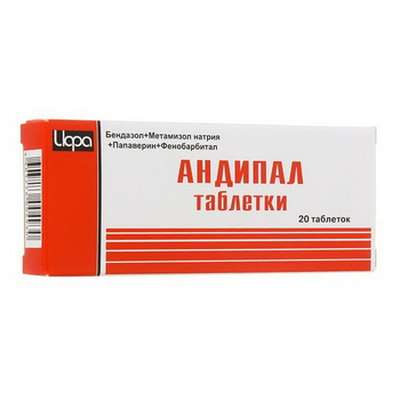Instruction for use: Insulin degludec (Insulinum degludecum)
I want this, give me price
Pharmacological group
Insulins
Nosological classification (ICD-10)
E10 Insulin-dependent diabetes mellitus
Decompensation of carbohydrate metabolism, Diabetes mellitus, Diabetes insulin sugar, Diabetes mellitus type 1, Diabetic ketoacidosis, Insulin-dependent diabetes, Insulin-dependent diabetes mellitus, Coma hyperosmolar non-ketoacidotic, Labile form of diabetes mellitus, Violation of carbohydrate metabolism, Type 1 diabetes mellitus, Type I diabetes mellitus, Insulin-dependent diabetes mellitus, Type 1 diabetes mellitus
E11 Non-insulin-dependent diabetes mellitus
Acetonuric diabetes, Decompensation of carbohydrate metabolism, Diabetes insulin-independent sugar, Diabetes sugar type 2, Type 2 Diabetes, Non-insulin-dependent diabetes, Non-insulin dependent diabetes mellitus, Non-insulin-dependent diabetes mellitus, Insulin resistance, Insulin resistant diabetes mellitus, Coma lactobacillus diabetic, Violation of carbohydrate metabolism, Type 2 diabetes mellitus, Diabetes mellitus type II, Diabetes mellitus in adulthood, Diabetes mellitus in old age, Diabetes insulin-independent, Diabetes mellitus type 2, Sugar insulin-independent diabetes type II
Characteristics An analogue of human insulin, long-acting basal insulin, produced by recombinant DNA technology using the Saccharomyces seresvisiae strain.
Pharmacology
Pharmacological action - hypoglycemic.
Mechanism of action
The pharmacological effect of insulin deglucose is realized similarly to the effect of human insulin by specific binding and interaction with the receptors of human endogenous insulin.
The hypoglycemic effect of insulin degludec is due to increased utilization of glucose by tissues after binding to the receptors of muscle and fat cells and a simultaneous decrease in the rate of glucose production by the liver.
Pharmacodynamics
During a 24-hour monitoring of the hypoglycemic effect of insulin degludec, patients who received the dose once a day had a uniform effect in the first and second 12-hour periods.
The duration of action of insulin degludec is more than 42 hours within the therapeutic range of doses.
A linear relationship between an increase in the dose of insulin degludec and its general hypoglycemic effect is proved.
There was no clinically significant difference in the pharmacodynamics of insulin degludec between elderly patients and older patients of young age.
There was no clinically significant formation of antibodies to insulin after treatment with insulin degludec for an extended period.
Pharmacokinetics
Absorption. The long-term action of insulin degludec is due to the specially created structure of its molecule. After subcutaneous injection, the formation of soluble stable multi-hexamers, which create a depot of insulin in the subcutaneous fat tissue. Multiexameres gradually dissociate, releasing insulin degluec monomers, resulting in a slow and prolonged delivery of the drug into the blood, providing a long-term planar profile of action and a stable hypoglycemic effect.
CSS in the blood plasma is achieved 2-3 days after the administration of insulin degludec.
Distribution. The relationship of insulin degludec with plasma proteins (albumin) is> 99%. With n / k introduction, the total concentration in the blood plasma is proportional to the administered dose in the range of therapeutic doses.
Metabolism. The breakdown of insulin degludec is similar to that of human insulin; All formed metabolites are inactive.
Excretion. T1 / 2 after SC injection of insulin degludec is determined by the rate of its absorption from the subcutaneous tissue, is approximately 25 hours and does not depend on the dose.
Special patient groups
There were no differences in the pharmacokinetic properties of insulin degludec, depending on the sex of the patients.
Patients of advanced age, patients of different ethnic groups, patients with impaired renal or hepatic function. There were no clinically significant differences in the pharmacokinetics of insulin degludec between elderly and young patients, between patients of different ethnic groups, between patients with impaired renal and hepatic function and healthy patients.
Children and teenagers. The pharmacokinetic properties of insulin deglucose in studies in children (6-11 years) and adolescents (12-18 years) with type 1 diabetes are comparable with those in adult patients. Against the background of a single administration of the drug to patients with type 1 diabetes mellitus it was demonstrated that the total effect of the dose of the drug in children and adolescents is higher in comparison with that in adult patients.
Pre-clinical safety data. Preclinical data based on studies of pharmacological safety, toxicity of repeated doses, carcinogenic potential, toxic effect on reproductive function, did not reveal any hazard of insulin deglucose for humans. The ratio of metabolic and mitogenic activity of insulin deglucose and human insulin is similar.
Indications
Diabetes mellitus in adults.
Contraindications
Increased individual sensitivity to insulin degludec, children under 18, pregnancy and breastfeeding (clinical experience of the drug in children, women during pregnancy and breastfeeding is absent).
pregnancy and lactation
The use of insulin degludec during pregnancy and breastfeeding is contraindicated, because Clinical experience of its use during these periods is absent.
It is not known whether insulin dehydrude is excreted in breast milk of women.
The action category for fetus by FDA is C.
Side effects
The most common side effect reported during the treatment with insulin degludec is hypoglycemia; Possible the development of allergic reactions, incl. Immediate type, including potentially life-threatening patients.
All of the side effects presented below, based on data from clinical trials, are grouped according to MedDRA and organ systems. The incidence of side effects was assessed as very often (> 1/10); Often (> 1/100 to <1/10); Infrequently (> 1/1000 to <1/100); Rarely (> 1/10000 to <1/1000); Very rarely (<1/10000) and unknown (can not be estimated based on available data).
On the part of the immune system: rarely - hypersensitivity reactions (including swelling of the tongue or lips, diarrhea, nausea, a feeling of fatigue and skin itching), hives.
From the side of metabolism and nutrition: very often - hypoglycemia (hypoglycemia can develop if the dose of insulin is much higher than the patient's need for insulin.) Severe hypoglycemia can lead to loss of consciousness and / or convulsions, temporary or irreversible impairment of brain function up to death. Symptoms of hypoglycemia tend to develop suddenly: they include cold sweats, pale skin, increased fatigue, nervousness or tremor, anxiety, unusual fatigue or weakness, and Rushen orientation, decreased concentration, drowsiness, expressed the feeling of hunger, blurred vision, headache, nausea, palpitations).
From the skin and subcutaneous tissues: infrequently - lipodystrophy (including lipogypertrophy, lipoatrophy can develop at the injection site.) Observance of the rules of changing the injection site within one anatomical area helps to reduce the risk of this side reaction.
General disorders and disorders at the injection site: often - reactions at the injection site (hematoma, pain, local hemorrhage, erythema, nodules of connective tissue, swelling, discoloration, itching, irritation and compaction at the injection site); Infrequent peripheral edema. Most reactions at the site of administration are insignificant and temporary, and usually disappear when continuing treatment.
In clinical trials, no differences in the frequency, type, or severity of adverse reactions in elderly patients and patients with impaired renal or hepatic function, as compared to the general population of patients, have been identified.
Interaction
The need for insulin can reduce oral hypoglycemic drugs, glucagon-like peptide-1 receptor agonists, MAO inhibitors, nonselective beta-blockers, ACE inhibitors, salicylates, anabolic steroids and sulfonamides.
The need for insulin can increase oral hormonal contraceptives, thiazide diuretics, GCS, thyroid hormones, sympathomimetics, somatropin and danazol.
Beta-blockers can mask symptoms of hypoglycemia.
Octreotide and lanreotide may either increase or decrease the body's need for insulin.
Ethanol (alcohol) can both enhance and reduce the hypoglycemic effect.
Incompatibility. Some drugs, when added to the insulin solution, degloudec can cause its destruction. A solution of insulin degludec can not be added to infusion solutions. You can not mix insulin degludec with other drugs.
Overdose
A certain dose that causes an overdose of insulin has not been established, however hypoglycemia can develop gradually if the dose of the drug has been introduced too high in comparison with the patient's need (see "Precautions").
Easy hypoglycemia patient can be corrected by taking into glucose or sugar products. Therefore, patients with diabetes are encouraged to constantly carry with them sugar-containing foods.
In case of severe hypoglycemia, when the patient is unconscious, he should enter glucagon (0.5 to 1 mg) IM or SC (can be injected by a trained person), or / in a solution of dextrose (glucose) (can enter Only a medical professional). It is also necessary in / dextrose administered if after 10-15 min after administration of glucagon patient does not regain consciousness. After recovery of consciousness the patient is advised to take food rich in carbohydrates, for the prevention of relapse of hypoglycaemia.
Routes of administration
PC.
Precautions
Hypoglycemia. When skipping meals or unplanned intensive exertion of the patient may develop hypoglycemia. Hypoglycemia can also develop if the dose of insulin is too high in relation to the patient's need (see "Side effects" and "Overdose").
After compensating for carbohydrate metabolism disorders (for example, with intensified insulin therapy), the symptoms typical for them-precursors of hypoglycemia may change in patients, which patients should be informed about. Common symptoms-precursors can disappear with prolonged course of diabetes. Correction of the dose of the drug may also be required if the patient has concomitant diseases of the kidneys, liver or adrenal, pituitary or thyroid gland disorders.
As with the use of other basal insulin preparations, recovery from hypoglycemia with the use of insulin degludec may be delayed.
Hyperglycemia. An insufficient dose of the drug or discontinuation of treatment can lead to the development of hyperglycemia or diabetic ketoacidosis. In addition, concomitant diseases, especially infectious diseases, can promote the development of hyperglycemic conditions and, accordingly, increase the body's need for insulin.
Typically, the first symptoms of hyperglycemia appear gradually, within a few hours or days. These symptoms include thirst, rapid urination, nausea, vomiting, drowsiness, redness and dryness of the skin, dry mouth, loss of appetite, odor of acetone in the exhaled air. With type 1 diabetes mellitus, without appropriate treatment, hyperglycemia leads to the development of diabetic ketoacidosis and can lead to death.
For the treatment of severe hyperglycemia, it is recommended that rapid insulin be administered.
Transfer of the patient from other insulin preparations. Transfer of a patient to a new type or preparation of insulin of a new brand or other manufacturer should occur under strict medical supervision. The translation may require a dose adjustment.
Simultaneous use of the preparations of the thiazolidinedione group and insulin preparations. Cases of CHF in the treatment of patients with thiazolidinediones in combination with insulin preparations have been reported, especially if such patients have risk factors for CHF. This fact should be taken into account in the appointment of patients with combined therapy with thiazolidinediones and insulin degludec. In the appointment of such combination therapy, it is necessary to conduct medical examinations of patients to identify signs and symptoms of CHF, weight gain and the presence of peripheral edema. If the symptoms of heart failure worsen in patients, treatment with thiazolidinediones should be discontinued.
Disorders from the side of the organ of sight. Intensification of insulin therapy with a sharp improvement in carbohydrate metabolism control may lead to a temporary deterioration in the state of diabetic retinopathy, while a prolonged improvement in glycemic control reduces the risk of progression of diabetic retinopathy.
It is necessary to inform visually impaired or visually impaired people that they always need help from those who do not have vision problems and are trained to work with the injector.
Prevention of erroneous application. The patient should be instructed to check the labeling on the label before each injection to avoid accidental administration of another dose or other insulin.
Antibodies to insulin. With the use of insulin, the formation of antibodies is possible. In rare cases, the formation of antibodies may require correction of the dose of insulin to prevent cases of hyperglycemia or hypoglycemia.
Influence on the ability to drive vehicles and mechanisms. The ability of patients to concentrate and respond to the reaction may be impaired during hypoglycemia, which can be dangerous in situations where this ability is particularly needed (for example, when driving vehicles or mechanisms).
Patients should be advised to take measures to prevent the development of hypoglycemia in the management of vehicles. This is especially important for patients with a lack or decline in symptomatic signs of developing hypoglycemia or with frequent episodes of hypoglycemia. In these cases, the desirability of driving a vehicle should be considered.

 Cart
Cart





